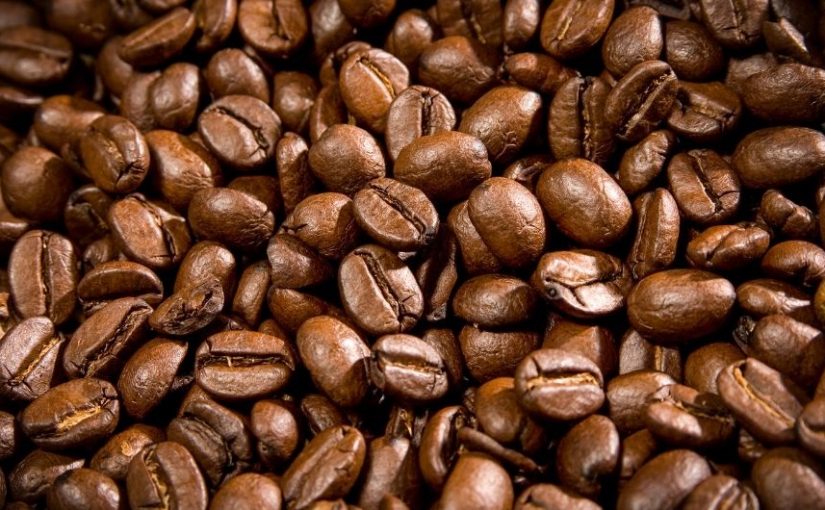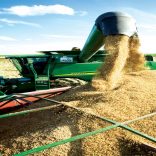Brazil to begin construction on TikTok data center in six months, minister says
Brazil exports a record 47,3 million bags of coffee in the 2023-24 harvest

Image: Cultivar
Brazilian coffee exports reached a historic volume of 47,300 million 60 kg bags in the 2023/24 harvest year, which implies an increase of 32,7% compared to the 35,632 million bags recorded from July 2022 to June 2023. The current amount, shipped to 120 countries, also represents growth of 3,6% over the previous record, of 45,675 million bags in the 2020/21 cycle. The data is part of the monthly statistical report of the Brazilian Coffee Exporters Council (Cecafé).
An increase of 20,7% was also recorded in foreign exchange revenue obtained from shipments made in the last 12 months ending last June. The value jumped from US$8,142 billion, in the 2022/23 season, to the current US$9,826 billion. This figure is the highest in the history of the survey of Brazilian coffee exports, which began in 1990.
The aforementioned performance was achieved with the 3,573 million bags sent abroad by the country in June, the highest amount recorded for this month each year, and the US$851,4 million in revenue, also a record for the months of June.
Thus, shipments of coffee from Brazil in the first half of 2024 totaled 24,286 million bags, generating US$ 5,331 billion, levels that imply increases, respectively, of 49,6% and 50%, measuring, in the same way, performances historical figures for this six-month interval.
According to the president of Cecafé, Márcio Ferreira, the result achieved by Brazilian exports reflects disparate contexts in the coffee market, involving less availability of other producing origins, but also the continuity of intense problems in logistics.
“On the positive side, Brazil, with a better harvest, after two smaller harvest cycles, expanded its market share in global trade, occupying spaces left by reduced supply from other producers, such as Indonesia and Vietnam, mainly with conilon and Robusta. national”, he analyzes.
He highlights that another positive point is the record foreign exchange revenue, which reflects good times of growth in the international market throughout the 2023/24 harvest. “Arabica and canephora coffees (robusta + conilon), as well as the soluble product, had their highest foreign exchange revenues in history, which enabled a record inflow of foreign currency into the country, a slight relief from the high costs in the exporters’ cash flow. and, mainly, significant transfers of the FOB value (Free on Board) to producers, at an average of 85%”, he comments.
“On the other hand – ponders Ferreira –, we continue to face intense logistical bottlenecks, with problems abroad due to the persistence of geopolitical conflicts, and, internally, with the exhaustion of the main Brazilian port, in Santos (SP), which has generated high additional and unforeseen costs for exporters, which, nevertheless, go to great lengths to honor commitments to international customers and maintain Brazil as the main global player”.
According to figures from the Detention Zero Bulletin (DTZ), prepared by ElloX Digital in partnership with Cecafé, 254 ships destined for coffee exports suffered delays or changes of call in Brazilian ports in June, a number that represented 62% of the 413 container ships handled last month. In Santos alone, 118 vessels experienced delays in the boarding process, or 82% of the total.
Ports
The Port of Santos was the main exporter of coffee from Brazil in the 2023/24 harvest year, with the shipment of 32,607 million bags, which corresponds to 68,9% of the entire volume sold. Despite the leadership in the ranking, this is the lowest percentage of representation of the Santos dock in history – which has already reached 85% –, which highlights its exhaustion and signals more difficulties for the second half of the year, when exports of containerized cargo increase.
Next comes the Rio de Janeiro maritime complex, which increased its share to 28,1% of exports, already absorbing “cargo leaks” from Santos, by sending 13,269 million bags abroad in the 2023/24 season; and the Port of Paranaguá (PR), with the shipment of 465.770 bags and a representation of 1%.
Coffee types
From July 2023 to June 2024, Arabica coffee, with 35,431 million bags, remains the most exported by Brazil. This amount represents 74,9% of the total and implies an increase of 16,7% compared to the 2022/23 harvest year.
The canephora species is the main highlight of the period, increasing its participation to 17,4% overall. In the 2023/24 coffee season, 8,238 million bags of Brazilian conilon and Robusta coffees were shipped, which represents a substantial increase of 461,1% compared to the same previous period.
The soluble coffee segment, with 3,585 million bags – a drop of 4,7% and 7,6% of the total – and the roasted and roasted and ground product section, with 45.445 bags (-5,2% and 0,1. XNUMX% representation), complete the list.
“The record performance of canephora coffees results from decades of investments in research and technology, which increased quality and productivity, through sustainable cultivation, enabling this species and its varieties to have volumes and sensory attributes for Brazil to expand its market share global, meeting growing global demand. To a lesser extent, Arabicas have also been playing this role”, says the president of Cecafé.
Main destinations
The 10 main buyers of coffee in Brazil expanded their purchases during the 2023/24 harvest. The United States tops the ranking, having imported 7,062 million bags, or 2,8% more compared to the previous cycle, which is equivalent to 14,9% of total exports.
Germany, with a representation of 13,8%, purchased 6,508 million bags (+26,1%) and occupies second place in the table. Next comes Belgium, with the purchase of 3,868 million bags (+111,5%); Italy, with 3,774 million bags (+26,3%); and Japan, with 2,471 million bags (+20,2%).
Up to tenth place, the performances of the United Kingdom also stand out, sixth place in the ranking, with imports of 1,738 million bags, a volume that implies growth of 137,4% in relation to the 2022/23 coffee season; and China, seventh place, which recorded the biggest increase in the purchase of Brazilian product in the period, of 186,1%, acquiring 1,646 million bags in the 12 months of the 2023/24 harvest.
By economic blocs, it is worth highlighting the growth in shipments of Brazilian coffee to the European Union, the main buyer of the product, amid the approaching validity of the EU Regulation for Deforestation-Free Products (EUDR), from January 1, 2025 In the 12 months of the 2023/24 season, Brazil exported 21,288 million bags to this destination, or 37,7% more compared to the same previous period.
In percentage terms, the 136,3 point increase in shipments to the other BRICS countries (2,843 million bags) stands out; 108,2% to Arab Countries (2,229 million bags); 55,4% to nations that make up the Trans-Pacific Partnership – TPP (6,143 million bags); 50,8% to Eastern Europe (1,475 million bags); and 48,9% to the Middle East (3,119 million bags).
Differentiated coffees
Differentiated coffees, which are those that have superior quality or certificates of sustainable practices, account for 18,6% of total Brazilian exports of the product in the 2023/24 harvest year, with a volume of 8,799 million bags sent abroad. This performance represents growth of 45,4% compared to that recorded in the 2022/23 coffee cycle.
The average price of the product was US$229,15 per bag, generating foreign exchange revenue of US$2,016 billion, which corresponds to 20,5% of that obtained with total coffee shipments from July last year to the end of June this year. In relation to the 2022/23 season, the value is 28,4% higher than that recorded in the same previous 12 months.
In the ranking of the main destinations for Brazilian differentiated coffees in the 2023/24 harvest, the USA occupies the lead, with imports of 1,852 million bags, equivalent to 21,1% of the total of this type of product exported.
Completing the top 5 are Germany, with the acquisition of 1,544 million bags and a representation of 17,5%; Belgium, with 957.999 bags (10,9%); Netherlands (Netherlands), with 649.966 bags (7,4%); and the United Kingdom, with 376.872 bags (4,3%).













Leave a Reply
Be the First to Comment!
You must be logged in to post a comment.
You must be logged in to post a comment.